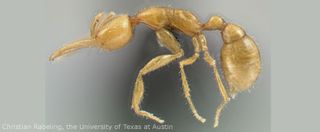Insects

Find out everything there is to know about insects and stay updated on the latest insect research with the comprehensive articles, interactive features and insect pictures at LiveScience.com. Learn more about these fascinating species as scientists continue to make amazing discoveries about insects.
Explore Insects
Latest about Insects

American burying beetle: The meat-eating insect that buries bodies for its babies to feast on
By Megan Shersby published
American burying beetle parents work together to find and bury a dead animal that its brood can consume after hatching.

More than 1,000 species live in and around an ordinary suburban house, survey in Australia shows.
By Matthew H. Holden, Russell Q-Y Yong, Andrew Rogers published
A house in Australia harbored more than 400 moths and butterflies, and hundreds of other species, including ones never documented before.

Watch ancient, giant millipede the size of a car brought back to life in remarkable reconstruction
By Hannah Osborne published
The massive, extinct millipede Arthropleura has been brought back to life in a stunning reconstruction for the Netflix series "Life on Our Planet."

Hercules beetle: The titan insect with giant horns for love and war
By Megan Shersby published
Hercules beetles can grow to almost 7 inches long and are among the largest flying insects on Earth.

Gum leaf skeletonizer: The venomous 'Mad Hatterpillar' that wears its old heads like a crown
By Megan Shersby published
Rather than throw its old head cases away, the gum leaf skeletonizer wears them like a hat to protect itself from predators.

Caterpillars evolved their weird chubby little 'prolegs' from ancient crustaceans
By Richard Pallardy published
The extra legs caterpillars have appear have origins in the primitive crustaceans that insects evolved from during the Ordovician period over 400 million years ago.

Soldier ants turned into foragers by scientists reprogramming their brains
By Sneha Khedkar published
Scientists discovered an enzyme within the ant "blood-brain barrier" that helps control whether an ant ends up a soldier or a forager.

Tortoise beetle larvae use their telescopic anuses to build shields from shed skin and poop
By Richard Pallardy published
Many tortoise beetle larvae create shields for themselves using faeces and old skin. Scientists have now looked at how and why they create these poop parasols.
Sign up for the Live Science daily newsletter now
Get the world’s most fascinating discoveries delivered straight to your inbox.
